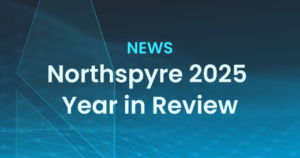Capital drives commercial real estate development. It fuels the years-long endeavor—taken without cash flow or revenue—until the project is complete. For the last decade, capital has been readily available at a historically low cost, but now, the tide has turned. With widespread economic uncertainty, rising interest rates and a banking crisis earlier this year, banks are guarded and have limited lending activity. As a result, commercial real estate loan originations were down 52% in the first half of 2023. Construction financing followed a similar trend, down 45% year-over-year. If we look at the period from 2017 to 2019, before the pandemic recalibrated the market, construction financing is down 54%.
Multifamily developers are bearing the brunt of the construction capital crunch. Multifamily is among the most capital-intensive asset classes to develop, and it is among the most in-demand property types in the country, with some outlets estimating that the country is short 6.5 million homes to meet current demand. Moreover, there is a shortage of 7.3 million affordable housing units. The nation needs multifamily development, and it needs it badly, but unfortunately, new multifamily starts are down 14% this year.
While the traditional debt markets have suppressed new multifamily construction loans, there are alternative sources of capital that are not currently constrained.
Here are four solutions to help round out your construction capital stack and push your multifamily project forward.
Low-Income Housing Tax Credits
For affordable housing developers, Low-Income Housing Tax Credits, also known as LIHTC, are a beneficial funding resource. LIHTC provides a dollar-for-dollar reduction in the tax liability on an affordable housing development. The program currently allocates $9 billion annually to state and local governments, making it the largest source of affordable housing financing in the US—and it’s expanding. The Biden Administration has proposed a $28 billion expansion of the LIHTC program over the next decade while also lowering the bond test so that more developers can access the funds.
Affordable housing developers have two options through the LIHTC program: the 9% credit and the 4% credit. The 9% credit can subsidize 70% of the cost of the low-income housing units without any other federal assistance, and the 4% credit will subsidize 30% of the cost. In exchange for the financing benefits, developers must agree to meet affordability rent requirements at the property for 30 years. Currently, LIHTC is responsible for funding 110,000 affordable apartment units annually, and the program has funded more than 2 million projects since launching in the 1980s.
Transit-Oriented Development Tax Credits
The Federal Transit Authority has a transit-oriented development pilot program to help subsidize mixed-use or mixed-income developments near mass transit stations. Funded by The Bipartisan Infrastructure Law, the pilot program has $13.4 million to fund TOD projects across the country in 2023 and $14 million annually through 2026.
The goal of the program is to activate mass transit centers in urban cities. By increasing TOD development, US Transportation Secretary Pete Buttigieg said, “More communities will be able to develop the areas around their transit stations, which will mean stronger local economies, cleaner air, and better access to the essential services families rely on.” While any developer meeting the program’s qualifications can apply, the FTA is prioritizing developments that include affordable housing. According to the FTA, there is the potential for affordable projects to receive up to 100% federal support.
The program mirrors several local TOD programs, which offer similar tax credits and incentives for building housing and other mixed-use projects near transit stations. Developers interested in pursuing funding should also explore state and local incentives for TOD projects.
C-PACE Financing
Commercial Property Assessed Clean Energy, or C-PACE, is a financing program legislated by the Department of Energy to fund green and renewable energy improvements on commercial properties without using public funds. The unique program allows borrowers to secure financing for property improvements or ground-up construction projects and make loan payments through an assessment on their property tax bill. As such, the loan is attached to the property, not the borrower, and it will transfer to the new ownership upon a sale. Through the program, borrowers can secure long-term financing with low payments, while also maintaining limited debt liability, since the loan will be assumed by the buyer.
Unlike the traditional bank debt today, there is currently no constraint on C-PACE funding; however, because the loan is attached to the property tax bill, the program must be adopted and regulated by state governments. Currently, only 32 states have adopted the legislation. Each state has different qualification criteria and term requirements, so you’ll need to check the legislation in your project’s state to see if you qualify. If there’s a C-PACE program, it’s a great opportunity to tap into an overlooked capital source.
Green Financing
For commercial real estate developers that incorporate green building standards into a project, there are several green loan products available. Green loans are widely available and typically offer a lower interest rate than a standard bank loan, making this a tremendous opportunity for developers to access capital while reducing the total cost of that capital.
While there are several options for green loans, Fannie Mae and Freddie Mac’s green lending programs are among the most popular for multifamily developers. Fannie Mae offers preferential pricing for projects that secure an approved green building certification. The program offers developers a lower interest rate, higher loan proceeds and reduced DSCR. For developers focusing on redevelopment projects, Freddie Mac’s Green Advantage program reduces debt pricing by up to 15 basis points, and earlier this year, Freddie Mac eliminated the affordability requirement to give more borrowers the opportunity to secure green funding.
In a constrained capital market with high interest rates, finding alternative funding sources can make or break a deal, but it is only the first step. Sophisticated developers are also utilizing modern real estate development software like Northspyre to streamline and automate processes. Northspyre is a command center for the day-to-day management of a ground-up construction project. By controlling the process through a centralized dashboard, you get a real-time big picture of the project and access to every detail. This high level of control has a direct impact on project cost. It reduces overages by as much as 66% and shaves up to 6% off of your budget.
There are opportunities for cost savings at every phase of a development project, from the financing package to construction and during operations. By unlocking these opportunities, you can drive better outcomes, even in a challenging investment market.
Looking to learn more about today’s real estate market? Discover how your firm can identify top project opportunities amid a shifting regulatory landscape in our guide Driving the Next Decade of Development, State-by-State.



